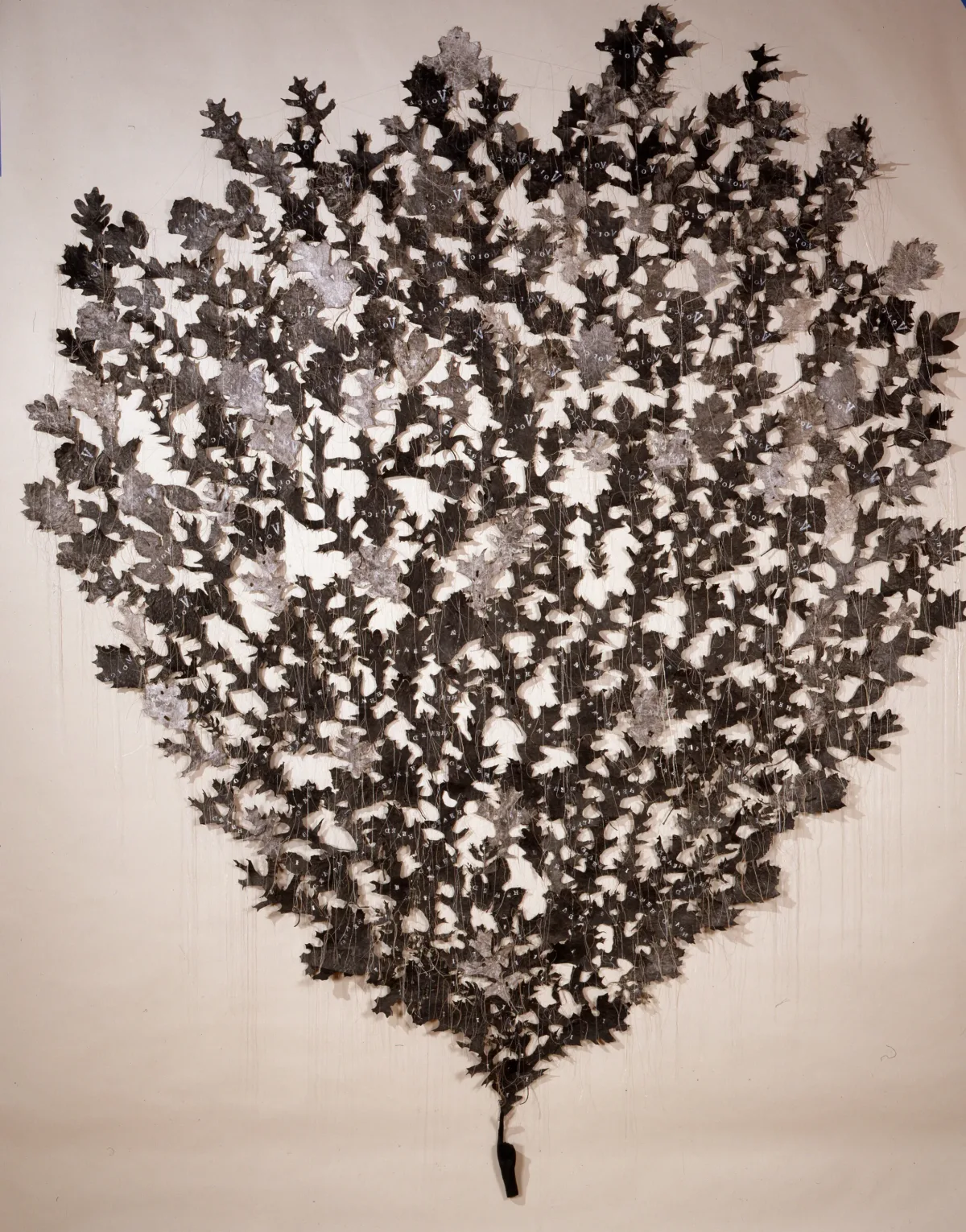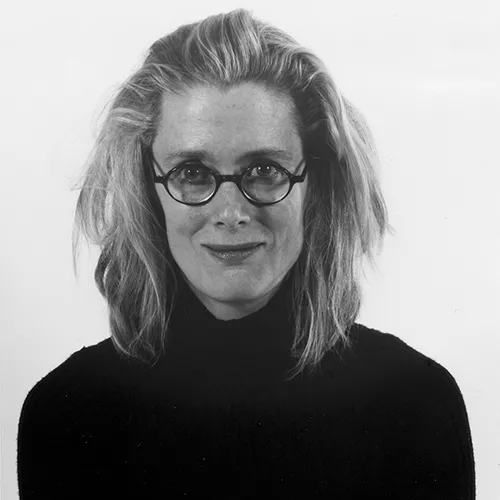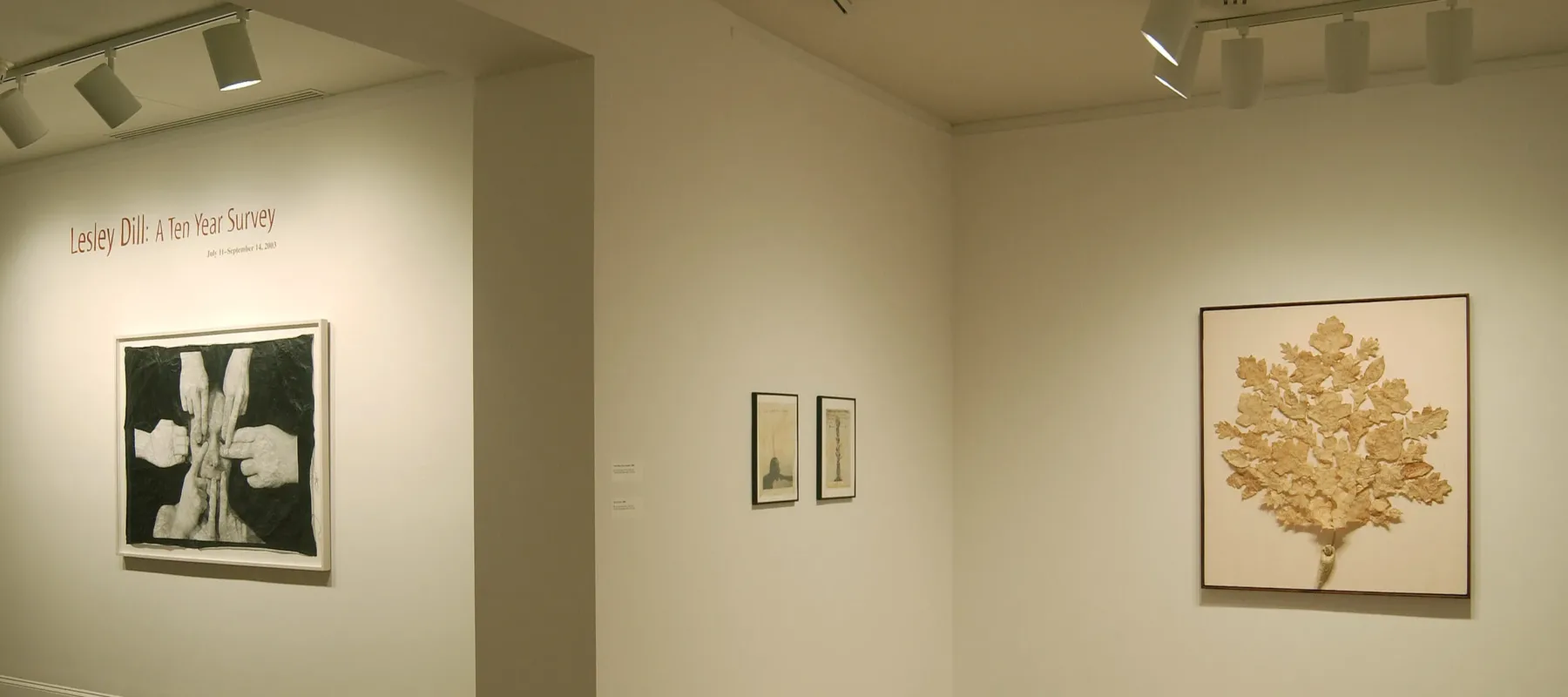NMWA presents Lesley Dill: A Ten Year Survey, an exploration of the works of American artist Lesley Dill. Since 1993, Lesley Dill (b. 1950) has explored the transcendent power of words. In her thought-provoking sculptures, photographs, prints, performances, and public art projects, language (especially poetry) fuels her complex investigations. Dill’s work expresses that the human sense of self is formed in large part through language and communication, with others and with our spiritual nature. Her themes include the fragility of existence, the strength of the human spirit, and the relationship between body and soul.
Following her 40th birthday, when Dill received a volume of poetry by Emily Dickinson (1830-1886), she began using fragments of poems in her work. Balancing the verbal and the visual, Dill’s work took on an extraordinary richness. Since then, she has also incorporated lines by other poets and writers, such as Rainer Maria Rilke (1875-1926), Franz Kafka (1883-1924), and Pablo Neruda (1904-1973). In many of her works, she visually captures the sound, emotional force, and tempo of spoken poetry. Dill, who holds degrees in English and philosophy, also has been inspired by other mystical and spiritual traditions, including Buddhism.
Dill has been equally inspired by nature, as is evidenced in her use of materials, including charcoal, horsehair, tea, rice paper, wax, and bronze. The resulting artwork possesses a monochromatic palette in which browns, blacks, and whites dominate. Many of her processes are related to traditional and laborious methods of women’s domestic work: stitching, stenciling, knitting, snipping, and staining. These techniques contribute to a sense of time and create surfaces that are both rich and sensuous.
A major focus of Dill’s work is how we experience language through our bodies. Sense organs feature prominently and illuminate her conviction that language can be felt as well as seen and heard. In her evocative combinations of language and image, she pushes the boundaries of rational understanding and intuitive perception, working in the space between.

Lesley Dill, I Heard a Voice, 2001; Tyvek, paper, thread and India ink, 130 x 111 in.; National Museum of Women in the Arts, Museum purchase: Members' Acquisition Fund; © 2001 Lesley Dill
The Artist,
Lesley Dill
Lesley Dill, a painter, printmaker, sculptor, photographer, and performance artist with an abiding interest in language, typically works with natural materials.
